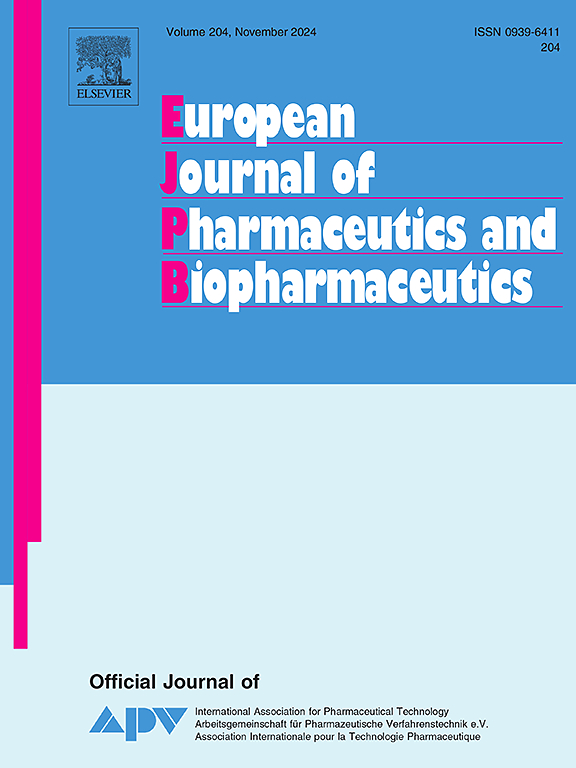纳米配方大麻二酚治疗皮肤病:基于grade的治疗证据和疗效的系统评价
IF 4.3
2区 医学
Q1 PHARMACOLOGY & PHARMACY
European Journal of Pharmaceutics and Biopharmaceutics
Pub Date : 2025-06-13
DOI:10.1016/j.ejpb.2025.114784
引用次数: 0
摘要
大麻二酚(CBD)是一种从大麻中提取的非精神活性化学物质,因其抗炎、抗氧化和伤口愈合的特性而具有重要的皮肤病学潜力。然而,它的临床应用受到不稳定性、极小的皮肤穿透性和溶解性差的限制。以纳米技术为基础的给药系统,如酸洗乳液、冷冻液、脂质纳米颗粒和纳米胶束,已经成为增强局部皮肤给药、改善渗透、实现持续释放和减少不良反应的有前途的策略。根据对16篇论文和18项专利(2019-2024)的分析,纳米配方的CBD具有更好的耐受性、缓释和皮肤递送能力。根据GRADE回顾,对皮肤吸收、炎症和伤口愈合的影响表现出中等确定性,但皮肤渗透、控释和安全性等结果显示出高度确定性。痤疮,牛皮癣和湿疹的应用显示增强了患者的依从性和疗效。尽管存在临床和监管障碍,纳米cbd平台提供了一种安全、专注和有效的方法来改善皮肤病学护理。本文章由计算机程序翻译,如有差异,请以英文原文为准。

Nanoformulated cannabidiol for skin disorders: A GRADE-based systematic review of therapeutic evidence and efficacy
Cannabidiol (CBD), a non-psychoactive chemical derived from Cannabis sativa L., has significant dermatological potential due to its antiinflammatory, antioxidant, and wound healing attributes. However, its clinical usage is limited by instability, minimal skin penetration, and poor solubility. Nanotechnology-based delivery systems such as pickering emulsions, cryogels, lipid nanoparticles, and nanomicelles have emerged as promising strategies to enhance localized skin delivery, improve penetration, enable sustained release, and reduce adverse effects. According to this analysis of 16 papers and 18 patents (2019-2024), CBD that has been nanoformulated offers improved tolerability, sustained release, and skin delivery. According to GRADE review, impacts on dermal absorption, inflammation, and wound healing demonstrated intermediate certainty, but outcomes such as skin penetration, controlled release, and safety showed high certainty. Applications for acne, psoriasis, and eczema show enhanced patient compliance and efficacy. Despite clinical and regulatory obstacles, nano-CBD platforms provide a safe, focused, and efficient approach to improving dermatological care.
求助全文
通过发布文献求助,成功后即可免费获取论文全文。
去求助
来源期刊
CiteScore
8.80
自引率
4.10%
发文量
211
审稿时长
36 days
期刊介绍:
The European Journal of Pharmaceutics and Biopharmaceutics provides a medium for the publication of novel, innovative and hypothesis-driven research from the areas of Pharmaceutics and Biopharmaceutics.
Topics covered include for example:
Design and development of drug delivery systems for pharmaceuticals and biopharmaceuticals (small molecules, proteins, nucleic acids)
Aspects of manufacturing process design
Biomedical aspects of drug product design
Strategies and formulations for controlled drug transport across biological barriers
Physicochemical aspects of drug product development
Novel excipients for drug product design
Drug delivery and controlled release systems for systemic and local applications
Nanomaterials for therapeutic and diagnostic purposes
Advanced therapy medicinal products
Medical devices supporting a distinct pharmacological effect.

 求助内容:
求助内容: 应助结果提醒方式:
应助结果提醒方式:


